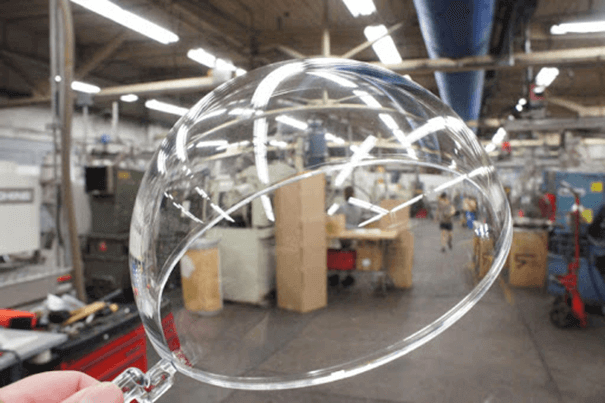For over two millennia, glass has been the primary material used for windows or any place where transparency was essential. It was the Romans that first made glass windows some 30 years BC.
But the Romans and the Roman Empire are long gone, and technology has much evolved since those days. With our growing knowledge of plastic materials, glass is slowly being replaced by transparent plastic. Transparency is no more an exclusive feature of glass.
Transparent plastic is, in many ways, better than traditional glass. Here are the top advantages of transparent plastic over glass:
- Affordable: Thanks to processes like injection molding, it’s much cheaper to produce transparent plastic than traditional glass. In addition to the production cost, transparent plastic is a much better insulator.
- Safety & Strength: Transparent plastic is ten times stronger than glass. Plus, it doesn’t shatter into small, yet very dangerous pieces.
- Weight: Transparent plastic is half the weight of glass the same size.
- Better Transparency
- Superior thermal efficiency.
- Easy to customize
- Transparent plastic can be colored, white, black, and fluorescent.
Popular Types of Transparent Plastic
Some of the most popular transparent plastic materials include Acrylic (polymethyl methacrylate -PMMA), polyethylene terephthalate (PET), transparent nylon, polycarbonate (PC), and acrylonitrile-styrene copolymer (AS).

Common Problems during the Process of Injection Molding Process
Products made from transparent plastic can sometimes go through a series of processes and refinement methods. Injection molding is one of the most popular ones that offers plenty of flexibility to manufacturers.
However, the injection molding process of transparent plastic is one that requires a high level of expertise, precision working, and consideration of multiples influential factors. That includes close attention to the used raw materials, mold temperature, injection pressure, and even the product design needs to take into consideration.
Otherwise, the end product can have cracks, low glossiness, discoloration, black spots, and so on. The list of defects and things that go wrong can be quite extensive.
Some of the precautions that can be taken include steps like:
- The raw material needs to be properly stored and needs to be perfectly cleaned. Furthermore, if it needs to be dried, the air needs to be both dehumidified and filtered.
- Product cooling is an essential element in delivering a top product. Therefore, the mold temperature needs to be always optimal and controlled from start to finish. If possible, it is for the best to keep the temperature at the highest possible level.
- The mold surface needs to have low roughness and to be glossy.
- Proper vents that can remove all the gasses promptly as they should.
- Walls don’t need to be too thick, except for PET, in which case they need to be thicker than 1 mm.
Final thoughts
Transparent glass is set on the path to replace the glass, and that’s a fact, at least in most cases. So yes, there are areas in which glass cannot be replaced by transparent plastic, but overall, transparent glass is the material of the future for many products as it has superior features







